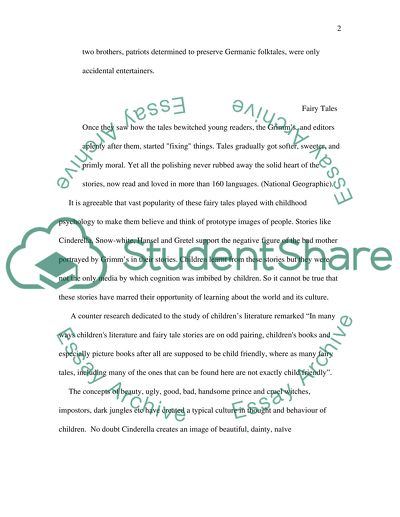Cite this document
(Association of Grimms Fairy Tales with Childhood Coursework, n.d.)
Association of Grimms Fairy Tales with Childhood Coursework. Retrieved from https://studentshare.org/literature/1554088-the-close-association-of-fairy-tales-with-childhood-has-made-it-easier-for-their-broader-cultural-meanings-to-be-disguised-or-denied-discuss-with-reference-to-relevant-textual-examples
Association of Grimms Fairy Tales with Childhood Coursework. Retrieved from https://studentshare.org/literature/1554088-the-close-association-of-fairy-tales-with-childhood-has-made-it-easier-for-their-broader-cultural-meanings-to-be-disguised-or-denied-discuss-with-reference-to-relevant-textual-examples
(Association of Grimms Fairy Tales With Childhood Coursework)
Association of Grimms Fairy Tales With Childhood Coursework. https://studentshare.org/literature/1554088-the-close-association-of-fairy-tales-with-childhood-has-made-it-easier-for-their-broader-cultural-meanings-to-be-disguised-or-denied-discuss-with-reference-to-relevant-textual-examples.
Association of Grimms Fairy Tales With Childhood Coursework. https://studentshare.org/literature/1554088-the-close-association-of-fairy-tales-with-childhood-has-made-it-easier-for-their-broader-cultural-meanings-to-be-disguised-or-denied-discuss-with-reference-to-relevant-textual-examples.
“Association of Grimms Fairy Tales With Childhood Coursework”, n.d. https://studentshare.org/literature/1554088-the-close-association-of-fairy-tales-with-childhood-has-made-it-easier-for-their-broader-cultural-meanings-to-be-disguised-or-denied-discuss-with-reference-to-relevant-textual-examples.


